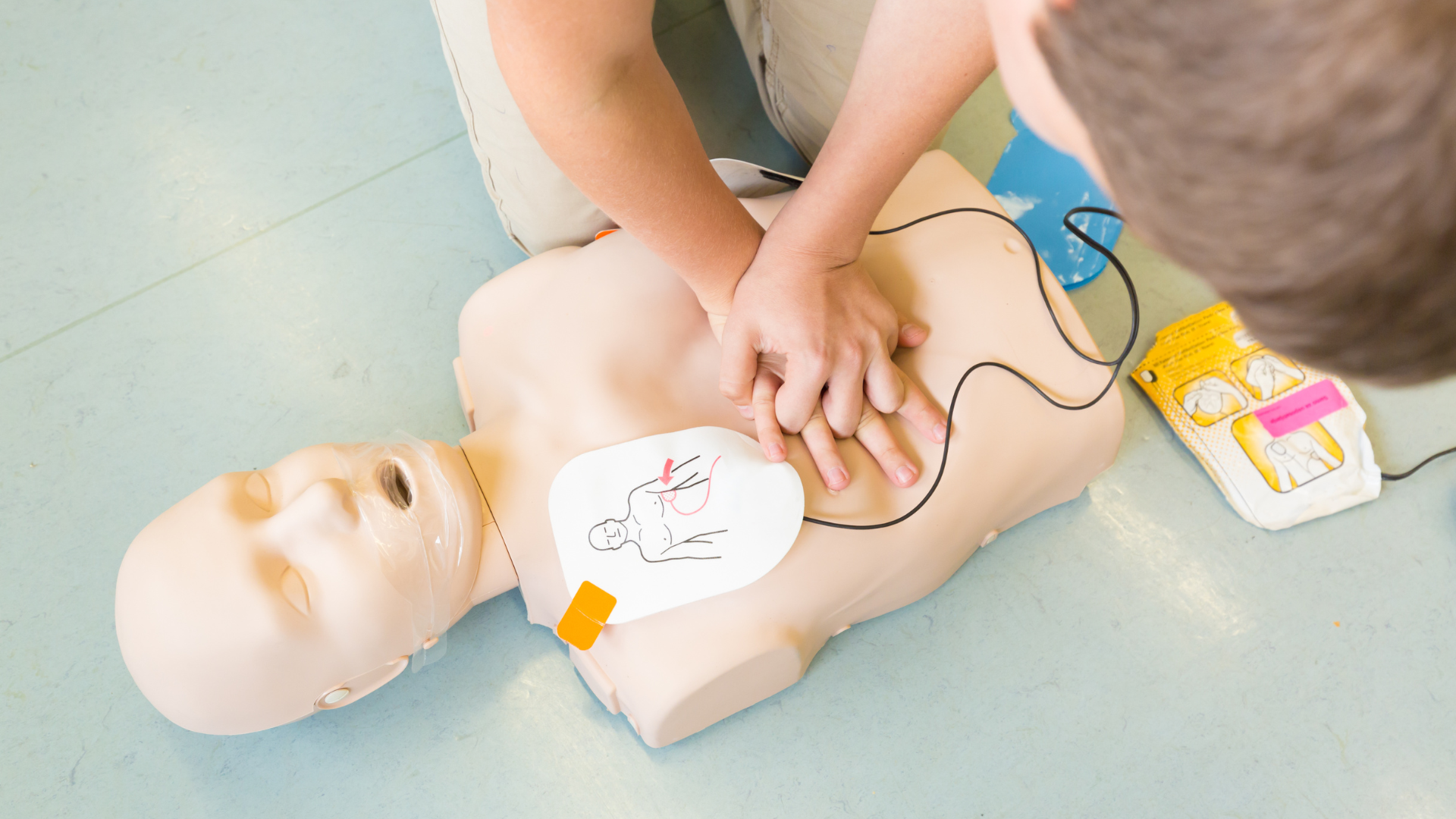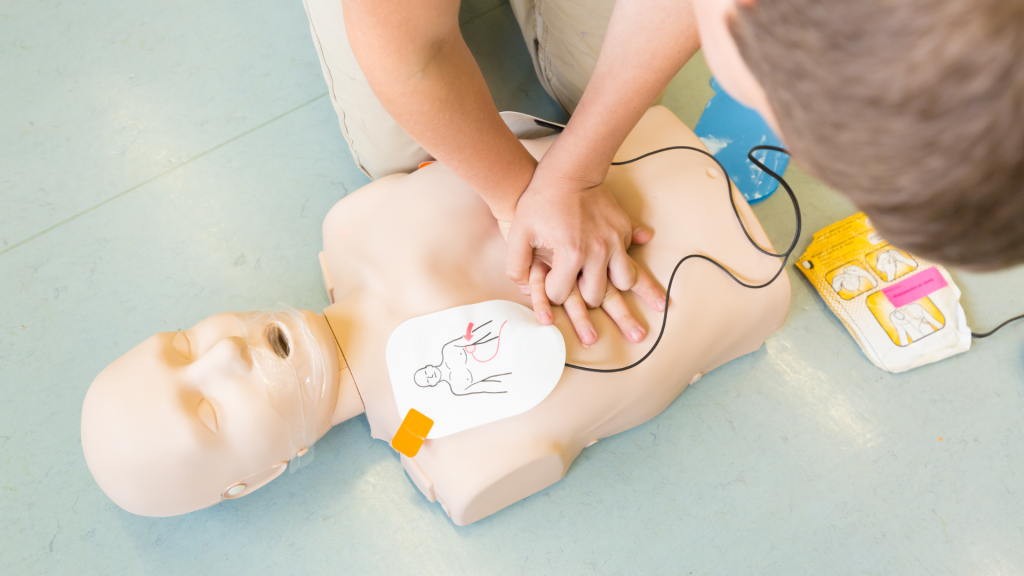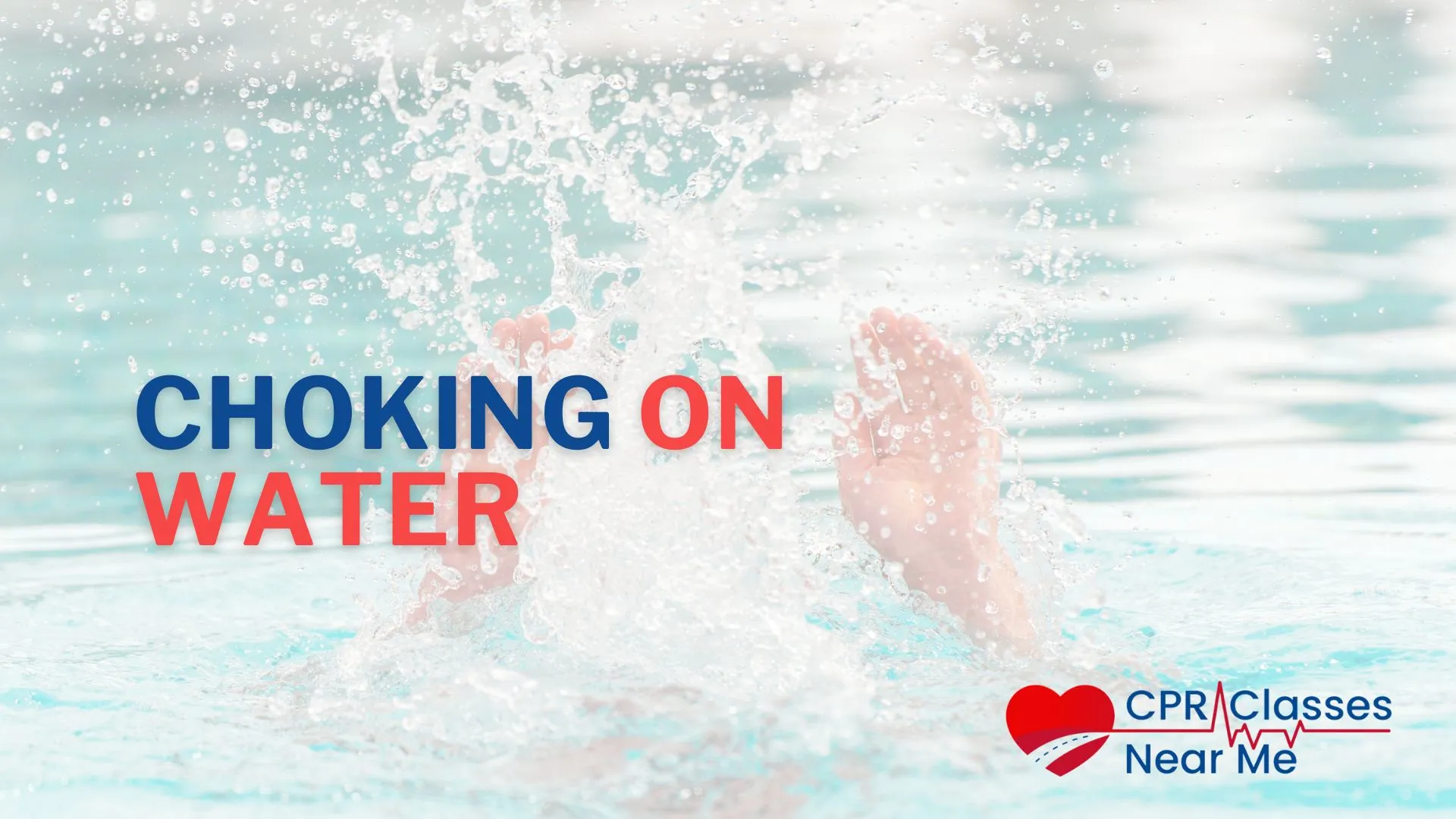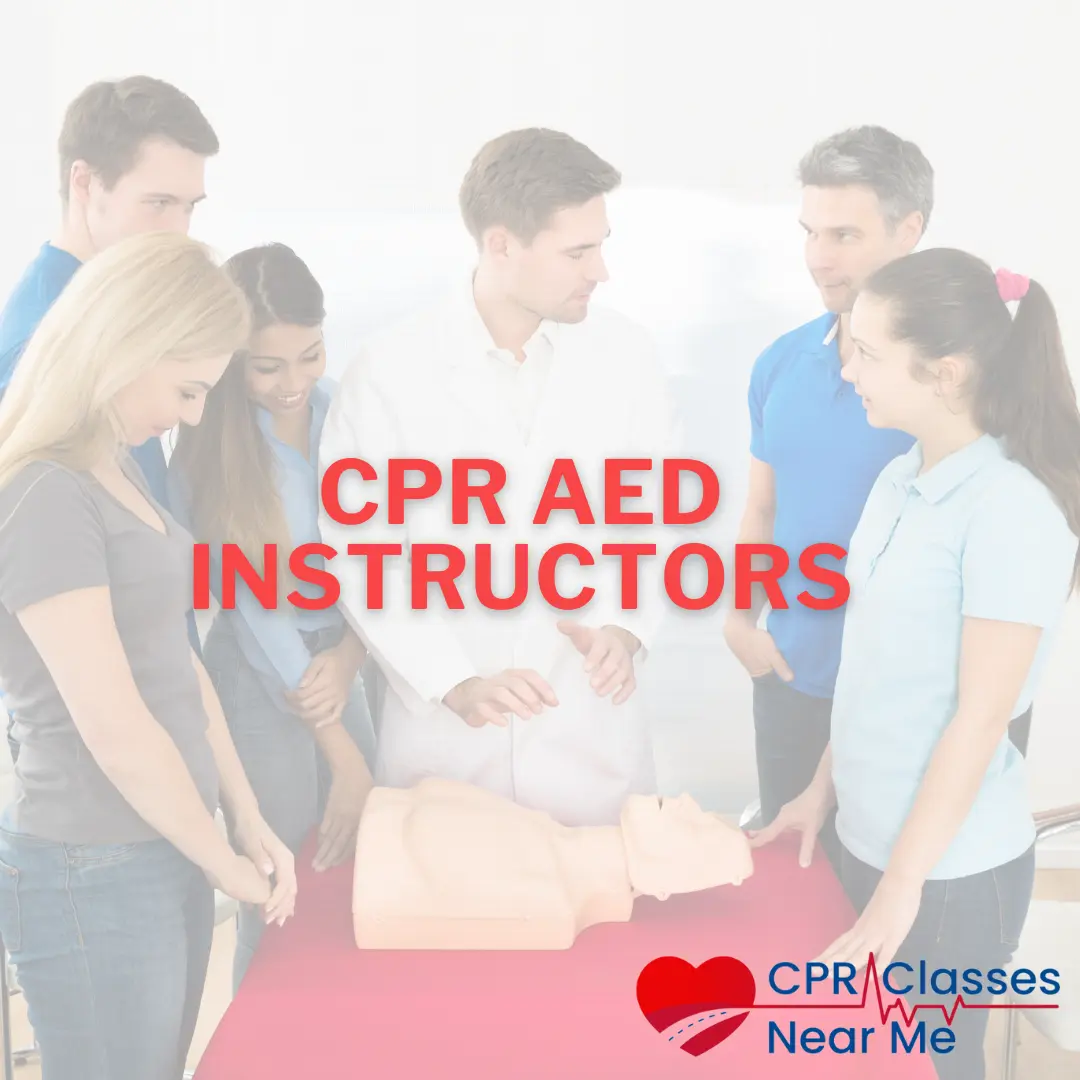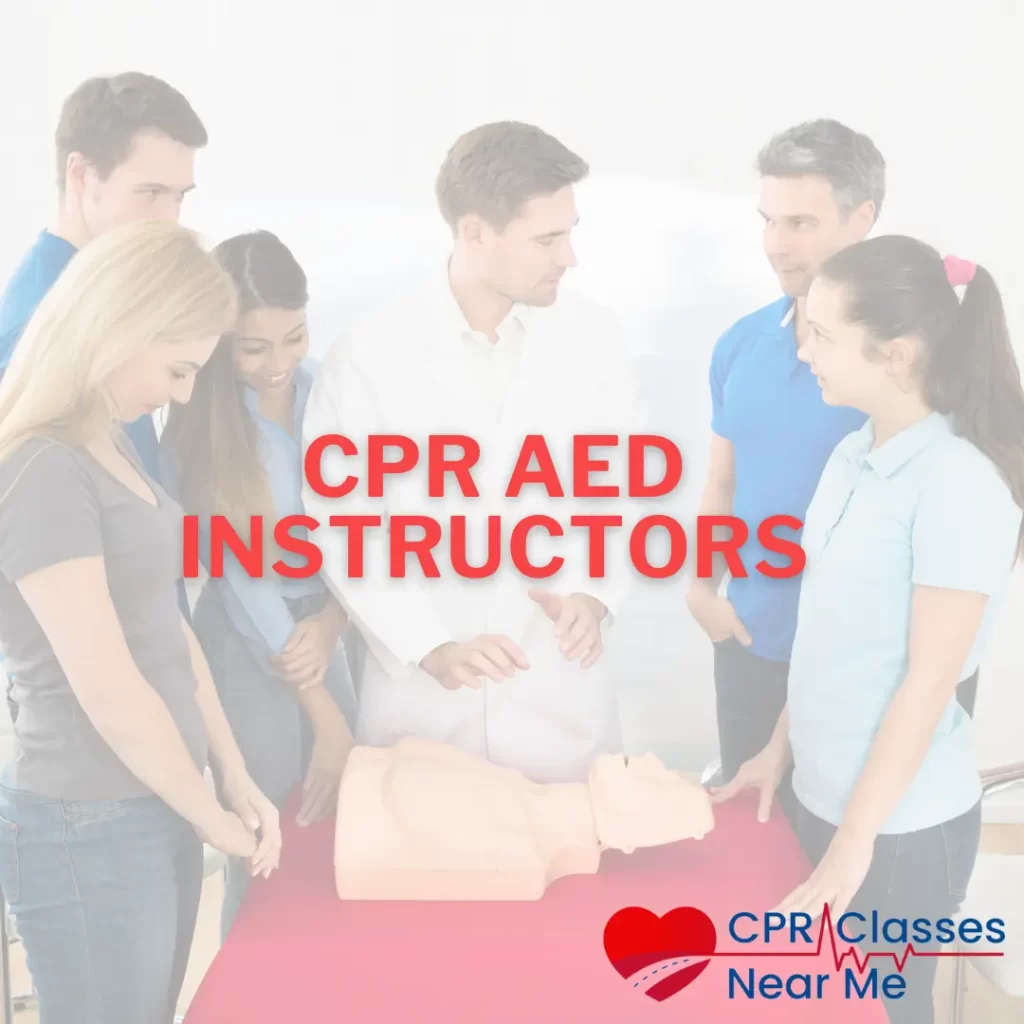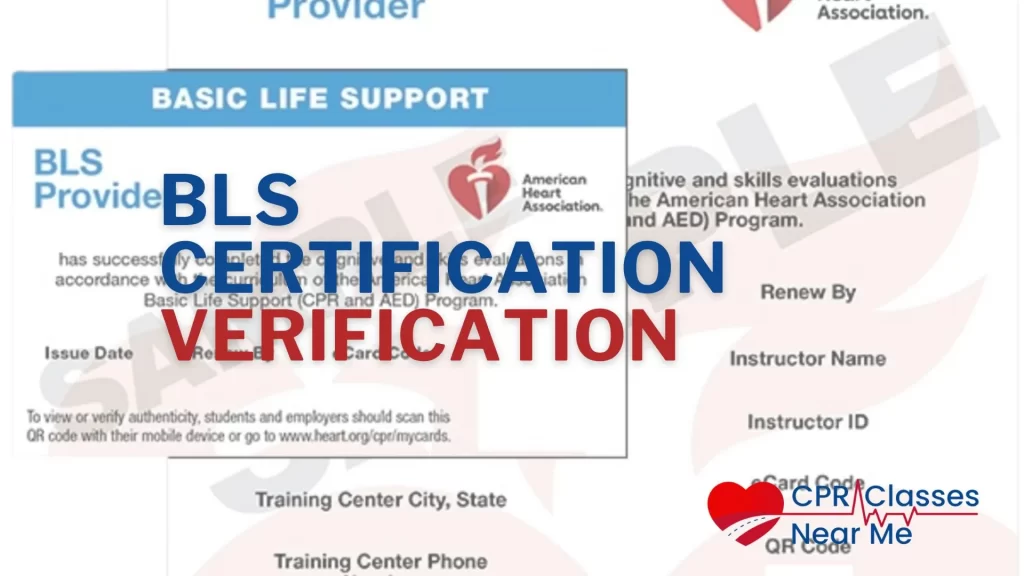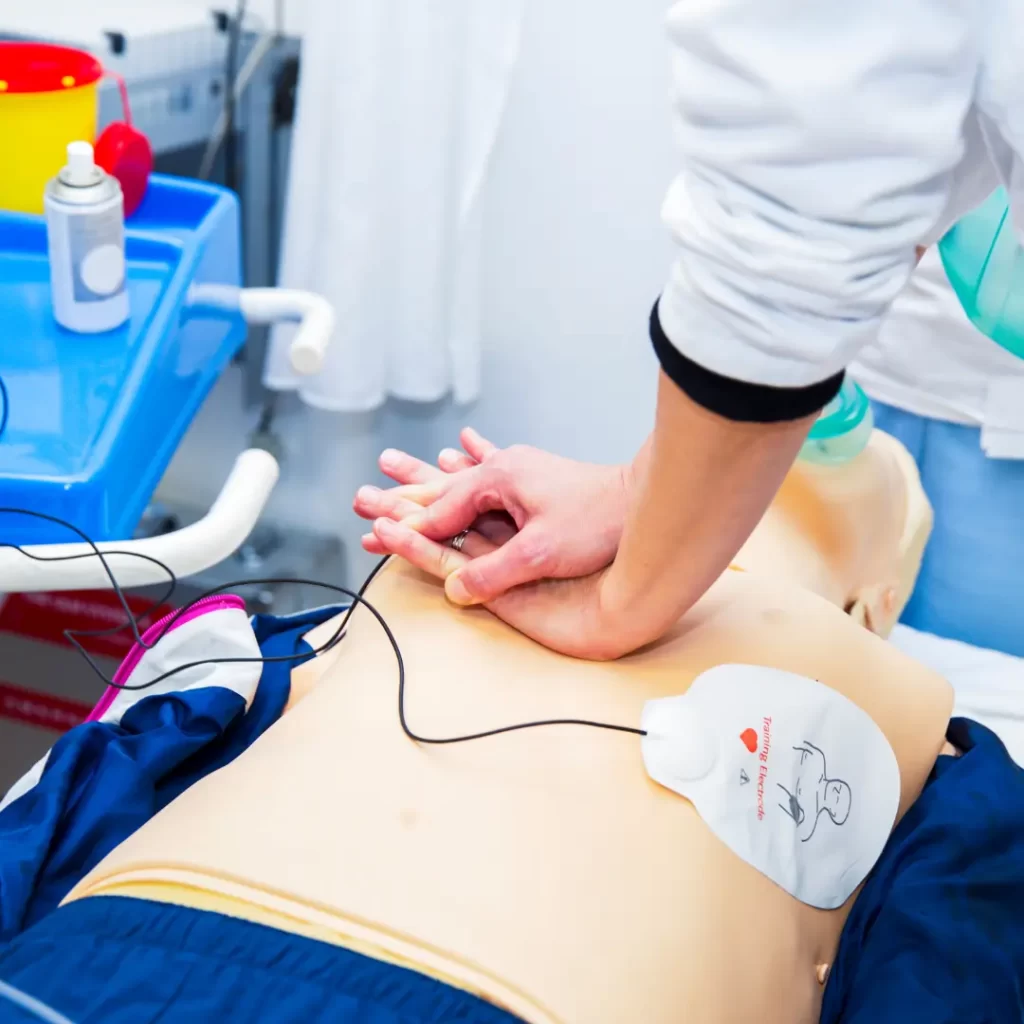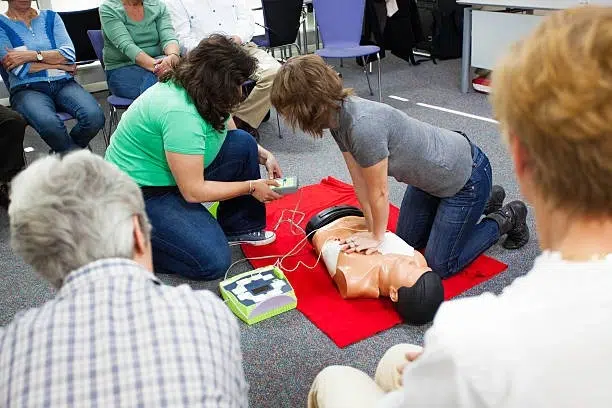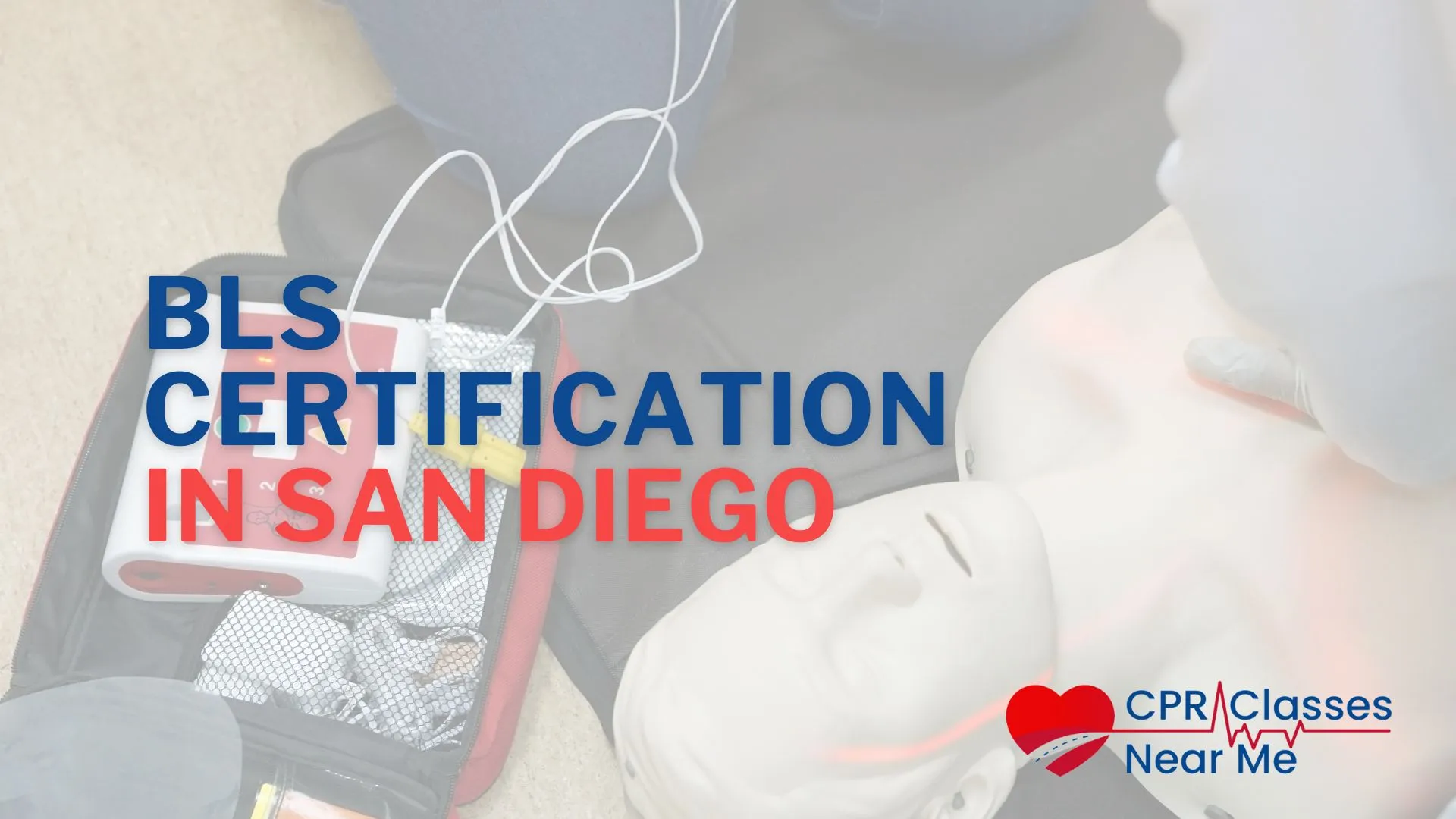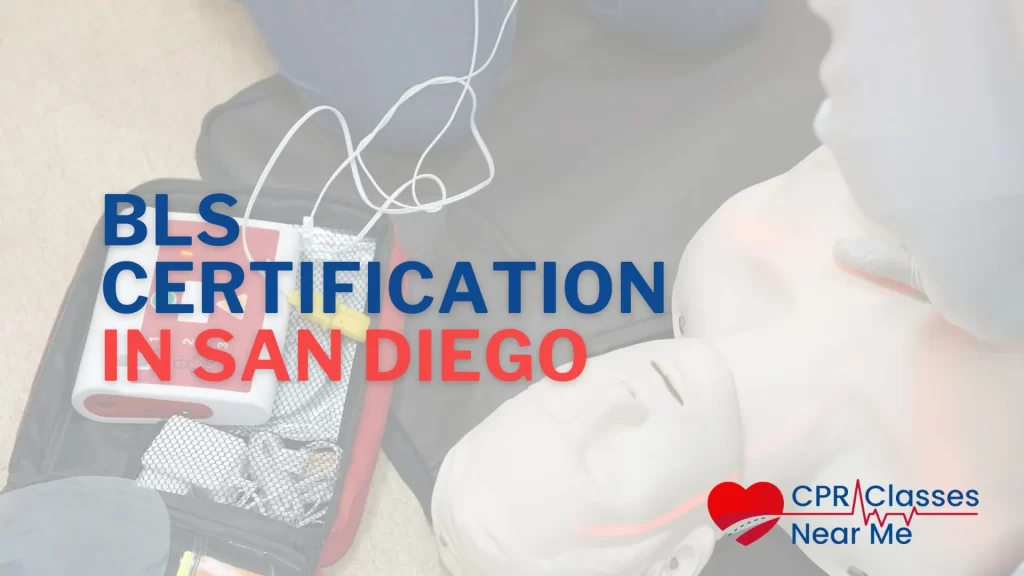Top Benefits of In-Person CPR Training Near Me
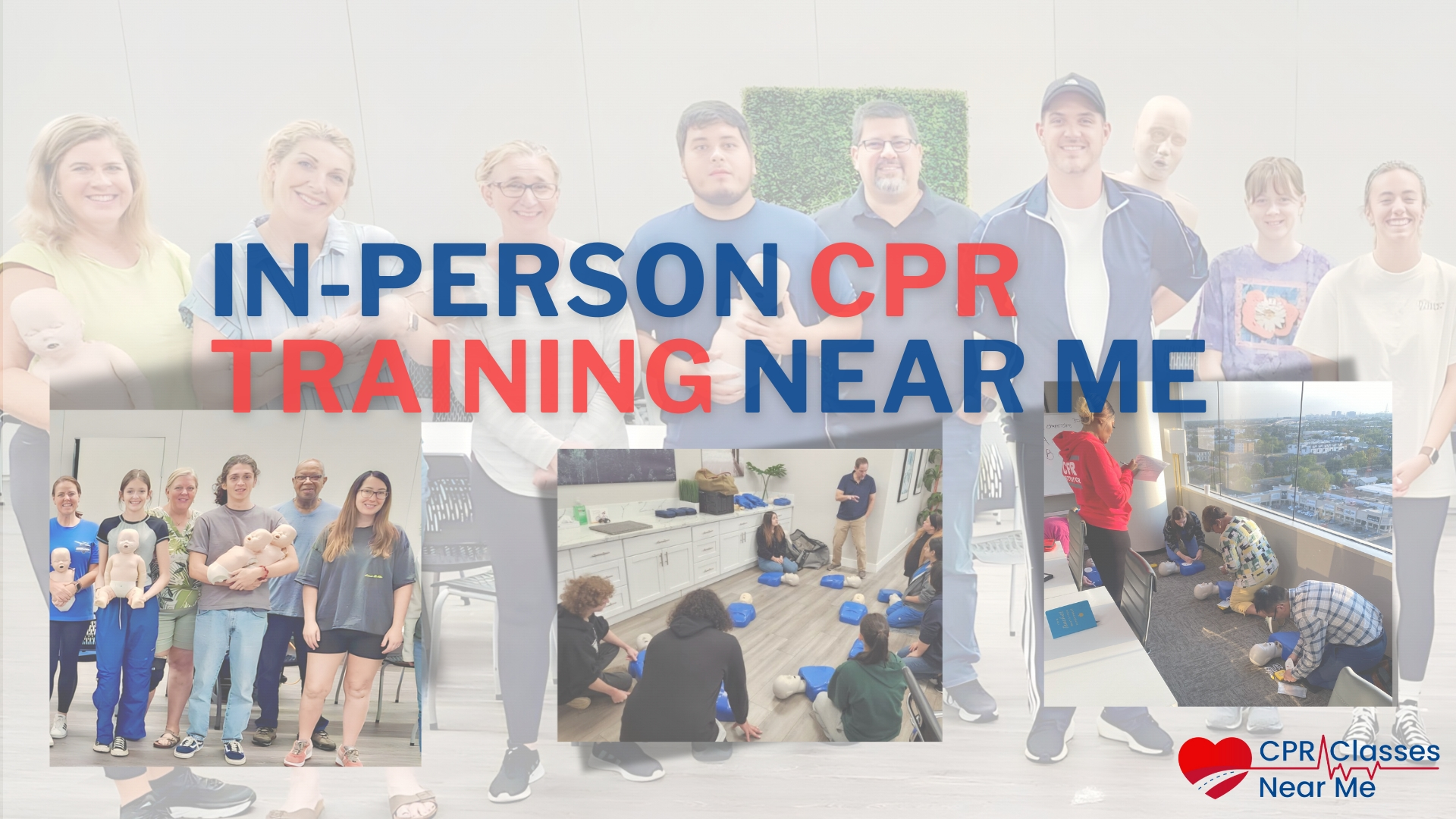
Top Benefits of In-Person CPR Training Near Me

When it comes to learning life-saving skills, in person CPR training near me is the best choice. In this blog, we’ll explore the importance of CPR training, the benefits of learning CPR, and why getting CPR certified is essential. Let’s explore into why in-person CPR training is so effective and how it can help you be prepared in emergencies.
The Importance of CPR Training
Understanding the importance of CPR training can’t be overstated. Cardiopulmonary resuscitation (CPR) is an essential skill that can save lives during cardiac emergencies. In-person training provides hands-on experience that online courses can’t match. This direct interaction helps learners grasp the techniques more effectively.
- Improved Response Time: CPR training enables individuals to respond quickly and effectively in emergency situations, increasing the chances of saving a life.
- Increased Confidence: With hands-on practice and instructor feedback, individuals gain confidence in their ability to perform CPR, which is essential for effective emergency response.
- Enhanced Workplace Safety: CPR training benefits the workplace by reducing the risk of workplace accidents and improving employee safety.
Why In-Person CPR Training is Essential
In-person CPR training near me offers several advantages over online courses. One of the primary benefits is hands-on practice, which is essential for building confidence and muscle memory. This practical experience is invaluable because it allows participants to perform CPR on mannequins under the watchful eye of experienced instructors. This direct interaction ensures that students can perfect their technique in real time, which is something online courses cannot offer.
In-person training also provides the benefit of immediate, personalized feedback and guidance from instructors. If you’re not compressing the chest deeply enough or your hand placement is incorrect, an instructor can correct you on the spot. This real-time correction is crucial because it helps you develop the correct habits and avoid common mistakes. Personalized feedback ensures that you master the skills needed to perform CPR effectively, increasing the chances of saving a life in an actual emergency.
Additionally, the interactive nature of in-person classes fosters a more engaging and supportive learning environment. You can ask questions, participate in discussions, and benefit from the collective experience of your peers. Instructors can demonstrate techniques up close, allowing you to observe the subtleties of proper CPR execution. This collaborative setting enhances your learning experience and reinforces your understanding of the material.
Moreover, in-person training often includes realistic scenarios that mimic real-life emergencies. These simulations prepare you for the unexpected, teaching you how to stay calm and focused under pressure. Practicing in a controlled environment helps you build the mental and emotional resilience needed to handle high-stress situations effectively.
In summary, the hands-on practice, immediate feedback, personalized guidance, interactive learning environment, and realistic training scenarios offered by in-person CPR training near me make it a superior choice for anyone serious about learning CPR. This comprehensive approach ensures that you are well-prepared to respond confidently and competently in an emergency.
Benefits of Learning CPR
Hands-On Practice
One of the main benefits of learning CPR in person is the opportunity for hands-on practice. Practicing on mannequins under the guidance of experienced instructors helps you understand the proper technique and develop muscle memory. This practice ensures you’re ready to act confidently in a real-life situation.
Immediate Feedback
In-person CPR training offers immediate feedback. Instructors can correct your technique on the spot, ensuring you perform chest compressions and breaths correctly. This real-time correction is crucial for mastering CPR.
Interactive Learning
Another benefit of learning CPR in person is the interactive environment. You can ask questions, engage in discussions, and participate in realistic scenarios. This interactive learning helps reinforce the training material and prepares you better for emergencies.
CPR Certification Advantages
Recognized Certification
Getting a CPR certification is a significant advantage. Many workplaces and organizations require CPR-certified individuals. Completing in-person CPR training near you usually includes a certification exam. Passing this exam provides you with a certification card, proving your competency in CPR.
Workplace Safety
The benefits of CPR training for the workplace are immense. Having certified individuals on staff ensures a safer environment. It shows that the organization values the health and safety of its employees. In emergencies, having someone who can perform CPR can make all the difference.
Confidence and Preparedness
Another key advantage of CPR certification is the confidence it brings. Knowing you have been trained correctly and have practiced extensively gives you the confidence to act quickly and effectively during an emergency.
Reasons to Get CPR Certified
Save Lives
The primary reason to get CPR certified is to save lives. Cardiac arrest can happen to anyone, anywhere. Being CPR certified means you’re prepared to help until professional medical help arrives.
Enhance Your Skills
CPR training doesn’t just teach you CPR. It often includes training on using an Automated External Defibrillator (AED) and managing other emergency situations. These additional skills are invaluable in emergencies.
Community Contribution
Being CPR certified allows you to contribute to the safety of your community. Whether it’s at work, at home, or in public spaces, your skills can make a difference. This contribution enhances overall community safety and preparedness.
CPR Training Benefits for the Workplace
Compliance with Regulations
Many industries require employees to have CPR training to comply with health and safety regulations. Ensuring your staff is trained can help meet these legal requirements and avoid potential fines.
Team Building
In-person CPR training sessions can also serve as team-building exercises. Employees learn to work together in stressful situations, enhancing teamwork and communication skills.
Reduced Workplace Incidents
Having CPR-certified staff can lead to a reduction in workplace incidents. Employees are more aware of health and safety practices, and in case of emergencies, they are prepared to respond effectively.
Conclusion
In-person CPR training near you is essential for your community because it provides the necessary skills to respond effectively in emergency situations. By learning CPR, individuals can help save lives and reduce the risk of cardiac arrest. With its numerous benefits, including improved response time, increased confidence, and enhanced workplace safety, CPR training is a valuable investment for individuals and communities alike.
If you’re looking for in-person CPR training near you, I highly recommend CPR Classes Near Me. With our comprehensive training programs, you’ll gain the skills and confidence to respond effectively in emergency situations. Our expert instructors provide personalized feedback and guidance, ensuring you master the skills you need to perform CPR effectively. At CPR Classes Near Me, we understand the importance of CPR training for your community, workplace, and personal safety.
That’s why we offer flexible scheduling and convenient locations to fit your needs. Our CPR certification advantages include improved emergency response, enhanced community safety, and increased workplace safety. Don’t wait until it’s too late. Take the first step towards saving lives and improving your community’s safety. Contact CPR Classes Near Me today to schedule your in-person CPR training near you.
AHA BLS CPR & AED Classes
About Author:
admin
Recent Posts
- Top Industries in Denver, CO That Require CPR Certification
- Stay Certified: CPR for Personal Trainers & Coaches in Denver
- Infant CPR Training for Babysitters and Nannies in Denver, CO
- The Importance of CPR and AED Training in Denver, CO Workplaces
- Why Every Parent in Denver, CO Should Take an Infant & Child CPR Class
Categories
FAQ
Our primary goal is to ensure that you receive a top-quality CPR/First Aid certification. With our in-person training in Austin, you can learn CPR and BLS in just one class. Your presence is all that’s needed to continue with your lesson! During your session, you will complete all the live-training components necessary to ensure you receive your AHA Healthcare Provider certification card.
Our CPR Classes in Austin are discounted to $59.95 (saving you $20), and our CPR + First Aid Class is offered at $79.95 (also saving you $20). When looking for CPR Classes, ensure to check for the American Heart Association seal. Other sites might seem cheaper but frequently lack the official training credentials demanded by employers.
Upon successful completion of the course, you will obtain a CPR certification that is valid for two years. The AHA CPR certification is recognized with the highest acceptance rate among employers nationwide.
Indeed! Enroll in any CPR Certification Austin BLS course to extend your certification for an additional two years. The in-person BLS course and the Renewal Class are identical.
Anyone capable of completing the course independently should consider pursuing CPR training and CPR Certification. There is no minimum age restriction for obtaining a CPR certification in Austin through the American Heart Association (AHA)..
CPR training needs to be carried out in person to guarantee its effectiveness. Our experienced instructors offer an engaging and dynamic learning experience. Typically, employers do not recognize CPR certifications that are obtained solely through online courses.
All authorized American Heart Association training centers are obligated to display the entire video. After a three-hour session with CPR Classes Near Me Austin, your BLS CPR eCard will be promptly issued by the instructor on the same day!

